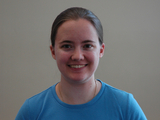Simulations Show Planet Driving Waves in Star Debris Disk
UMBC physics graduate student Erika Nesvold has developed a state-of-the-art 3-D numerical simulation of the star Beta Pictoris. The work was part of her PhD thesis under the mentorship of Dr. Marc Kuchner at NASA Goddard which was successfully defended in June 2015. The simulation (named SMACK, Superparticle-Method Algorithm for Collisions in Kuiper belts) of the debris disk of nearby star Beta Pictoris models the star, its disk, and the second of its planets, Beta Pictoris b and explains many observed features that remained unexplained until now. The simulation follows the collisions among the orbiting debris, as their orbits are disturbed by the spiral waves driven by the planet’s motion, and the production of dust during these collisions. The simulation is able to follow the evolution of warps and eccentric rings, as can be seen in this NASA video (http://www.nasa.gov/feature/goddard/new-nasa-supercomputer-model-shows-planet-making-waves-in-nearby-debris-disk).
Dr. Nesvold will continue her research as a postdoctorate fellow at the Carnegie institute in Washington, DC.
Dr. Nesvold will continue her research as a postdoctorate fellow at the Carnegie institute in Washington, DC.
Posted: August 10, 2015, 11:10 AM
